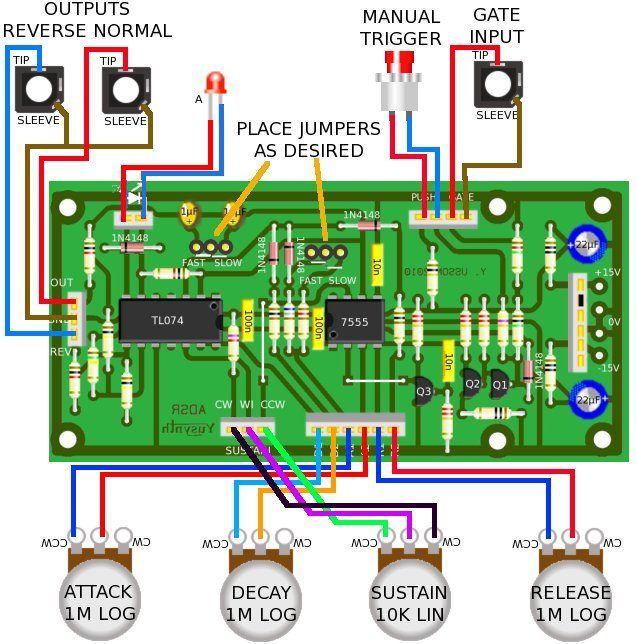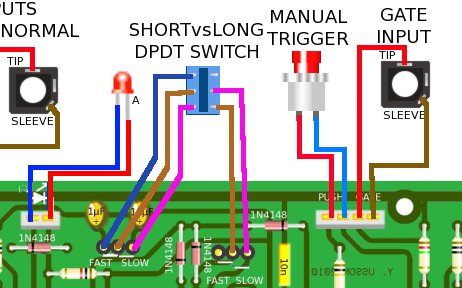|
reference
|
value
|
quantity
|
U1
|
7555 (or any
other CMOS version of the NE555, DO NOT USE A
NE555 !)
|
1
|
U2
|
TL074
|
1
|
Q1, Q2, Q3
|
BC547C or
equivalent (mind the pinout !)
|
3
|
D1,D2,D3,D4
|
1N4148
|
4
|
R1,R2,R8
|
10 ohms
|
3
|
R13,R16
|
100 ohms
|
2
|
R14
|
120 ohms
|
1
|
R15
|
680 ohms
|
1
|
R20,R21,R22
|
1K
|
3
|
R12
|
4.7K
|
1
|
R4
|
10K
|
1
|
R7,R9,R10,R11
|
22K
|
4
|
R5
|
47K
|
1
|
R18,R19
|
100K
|
2
|
R17*
|
150K* optional,
sets the start level for inverted output (see
text)
|
1
|
R6
|
1M
|
1
|
R3
|
1.2M
|
1
|
P1,P2,P3
|
1M log
|
3
|
P4
|
10k lin
|
1
|
C4,C5
|
10n polyester
film
|
2
|
C3,C6
|
100nF ceramic
or polyester film
|
3
|
C7
|
1µF 35V
tantalum |
1
|
C8
|
10µF 35V
tantalum |
1
|
C1,C2
|
22µF 35V
polarised |
2
|
LD1
|
LED, low
current
|
1
|
JK1,JK2,JK3
|
female jack
socket
|
3
|
SW1
|
push button
(push to make)
|
1
|
|





















